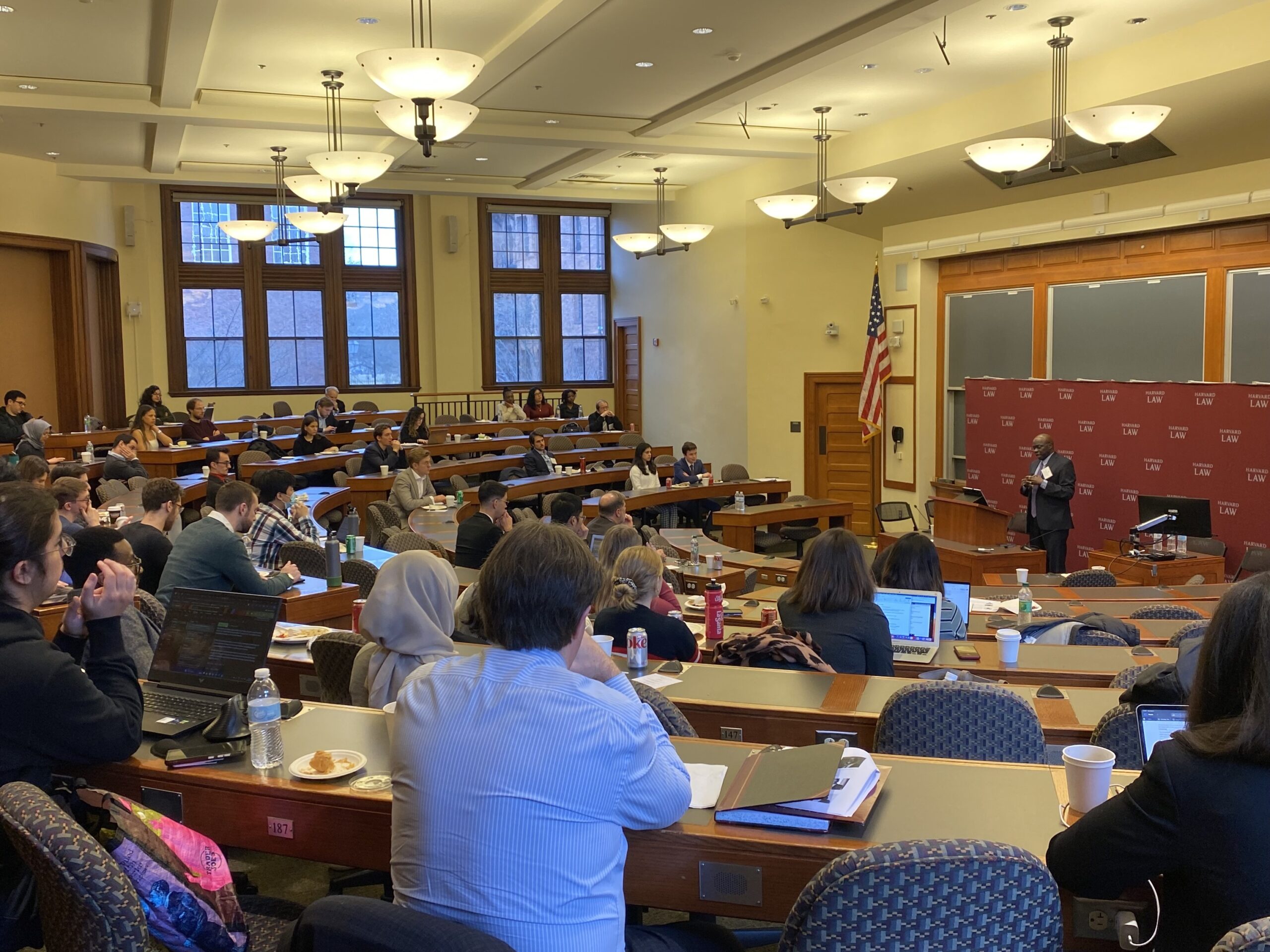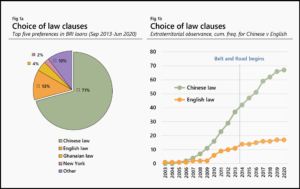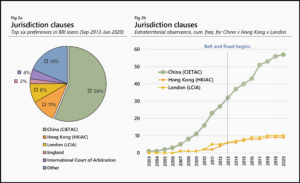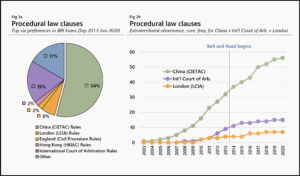Crimes Against International Humanitarian Law in Myanmar: Will the Philippines Impose Universal Jurisdiction on behalf of Burmese Refugees?
Lorenz Dantes
I. Introduction
On October 25, 2023, a first-of-its-kind legal effort began in the Philippines. The “Philippine Act on Crimes Against International Humanitarian Law, Genocide, and Other Crimes Against Humanity,” Republic Act (RA) No. 9851, was invoked as a means of prosecuting and achieving justice for atrocities that occurred outside of the Philippines. Burmese refugees who fled to the Philippines initiated criminal proceedings against members of the ruling junta regime in Myanmar for violations of International Humanitarian Law before the Philippine Department of Justice. According to one Burmese refugee, “[w]e can’t find justice in our own country[,] and we are expecting that the Philippines is the place where we can find some form of justice from the atrocities we have suffered.” Philippine prosecutors must first determine the existence of “probable cause” before the case can proceed to court.
The charges against the junta primarily involve violations of RA 9851’s Section 4(b)(1), Section 4(c)(2), Section 4(c)(7) and Section 4(c)(10). RA 9851 is often referred to as the Philippine version of the 1998 Rome Statute and was enacted in 2009 to enable the Philippines to prosecute “serious crimes of concern to the international community” such as genocide, crimes against humanity, and war crimes, especially since it is not a member of the International Criminal Court (“ICC”). Section 4(b)(1) covers situations of non-international armed conflicts wherein “serious violations of common Article 3 to the four Geneva Conventions of 12 August 1949” occurred, through the infliction of violent acts against persons taking no active part in the hostilities. Sections 4(c)(2), 4(c)(7), and 4(c)(10), on the other hand, penalize “serious violations of the laws and customs applicable in armed conflict.” This includes intentional attacks on civilian (non-military) objectives, bombardment of undefended towns, and attacks on buildings dedicated to “religion, education, art, science or charitable purposes, historic monuments, hospitals and places where the sick and wounded are collected.”
One main feature of RA 9851 that Burmese refugees sought to use is Section 17, which states that jurisdiction can be exercised:
[O]ver persons, whether military or civilian, suspected or accused of a crime defined and penalized in this Act, regardless of where the crime is committed, provided, any one of the following conditions is met:
(a) The accused is a Filipino citizen;
(b) The accused, regardless of citizenship or residence, is present in the Philippines; or
(c) The accused has committed the said crime against a Filipino citizen.
In assessing its applicability, it is important to remember that the accused, in this case, are the members of the military junta. The complaint includes Dr. Vung Suang Thang (Chief Minister of the State of Chin), Lt. Gen. Min Naing (chair of the Cyclone Mocha Emergency Response in the State of Chin), Lt. Gen. Tay Zar Kyaw (chief of the Bureau of Special Operations), Maj. Gen. Phyo Thant and Than Htike, Brig. Gen. Myo Htut Hlaing, Col. Saw Tun, Lt. Col. Myo Zin Tun, and Maj. Nay Myo Oo. Notably, it also includes Gen. Min Aung Hlaing, the overall head of the ruling military junta and the commander in chief of the Tatmadaw, the military forces of Myanmar.
The Burmese refugees stated in their complaint that these members of the military junta bear criminal liability for the murder of civilians and the torching of houses in Myanmar’s Chin state, one of the least developed regions in Myanmar. They also narrated that following a clash between the Tatmadaw and rebel groups that resulted in the deaths of 30 Tatmadaw soldiers, the Tatmadaw took revenge on the residents of the town of Thantlang by burning their houses and firing on villagers and members of a Baptist church group delivering medical supplies and putting out the fires. This violence then produced a massive forced displacement of the town’s villagers into neighboring India’s Mizoram state. To support these factual allegations, the complaint cites a report dated February 25, 2022, from the United Nations High Commissioner of Human Rights, which states that the Tatmadaw Light Infantry Brigade burned down over 900 buildings in Thantlang through at least 23 successive attacks on churches, houses, schools, churches, and offices of non-governmental organizations.
According to the Filipino lawyers of the Burmese refugees, RA 9851 is sufficient to provide the Philippine legal system with universal jurisdiction over these incidents. They contend that “universal jurisdiction means that any state can prosecute a crime … This is not an ordinary crime. It’s considered a crime against the entire international community.” The lawyers also argued that since the military junta “do not represent the legitimate government of the people of Myanmar under international law,” they cannot invoke sovereign or diplomatic immunity. Coincidentally, this complaint also corroborates the damning evidence released last August by a group of investigators from the United Nations known as the Investigative Mechanism for Myanmar, which indicates that the Tatmadaw deliberately targeted civilians with bombs and carried out mass executions of detained people during its operations. This includes dropping fuel-air explosives on a village in the Sagaing region that resulted in the deaths of numerous children.
With the filing of this case, the Philippines has now become the fifth country after Germany, Turkey, Indonesia, and Argentina where legal cases have been sought to be initiated over the crimes committed by the Tatmadaw against a number of civilian population groups in Myanmar. In addition, proceedings are also ongoing at the ICC and at the International Court of Justice (“ICJ”). The lawyers of the Burmese refugees in the Philippines note, however, that the combination of the Philippines having its own domestic law over crimes against International Humanitarian Law as well as being geographically conducive towards getting testimony from witnesses in Myanmar makes it a crucial legal jurisdiction for pursuing international justice over the crimes committed in Myanmar.
It remains unclear whether the existing domestic legal framework in the Philippines is sufficient to pursue international justice over the alleged atrocities committed in Myanmar. To answer this question, we must examine relevant legal and policy considerations.
II. Relevant Philippine Legal Framework
As early as 1952, the Philippines had already ratified the Fourth Geneva Convention on the Protection of Civilian Persons in Time of War. As such, Article 146 of the Fourth Geneva Convention, which has been described as an explicit reference to universal jurisdiction, has the force and effect of a domestic statute within the Philippine jurisdiction. According to this provision, “[e]ach High Contracting Party shall be under the obligation to search for persons alleged to have committed, or to have ordered to be committed” grave breaches of the convention, as well as to “bring such persons, regardless of their nationality, before its own courts.”
In the case of Bayan Muna v. Romulo, the Philippine Supreme Court (“The Court”) described the relationship between “jus cogens crimes” and universal jurisdiction. According to the Court, jus cogens crimes are so fundamental to the existence of a just international legal order that
[A]ny state may exercise jurisdiction over an individual who commits certain heinous and widely condemned offenses, even when no other recognized basis for jurisdiction exists. The rationale behind this principle is that the crime committed is so egregious that it is considered to be committed against all members of the international community and thus granting every State jurisdiction over the crime.
Thus, the Court concluded that even if a particular country does not have domestic legislation on crimes against humanity and war crimes, it would still have jurisdiction to try these crimes due to the principle of universality. According to the Court, this is even more so in countries that adhere to the doctrine of incorporation or those that “recognize [ ] international law as part of the law of the land, necessarily including international crimes, even without any local statute,” since international legal principles on genocide, war crimes, and crimes against humanity have already attained the status of customary international law (“CIL”). Through this pronouncement, therefore, the Court recognized that universal jurisdiction can indeed be utilized within the Philippines’ domestic legal system.
However, a right to try does not mean a duty or obligation to do so, especially for an accused that is in absentia. As stated by the Court in another case, “notwithstanding an array of General Assembly resolutions calling for the prosecution of crimes against humanity and the strong policy arguments warranting such a rule, the practice of states does not yet support the present existence of an obligation to prosecute international crimes.” Moreover, the Court added that an invocation of the concept of erga omnes obligations, or those obligations which are “owed by States towards the community of states as a whole,” will not alter this analysis because it cannot be shown yet that the “duty to prosecute perpetrators of international crimes is an erga omnes obligation.”
Fittingly, the Court has thus described universal jurisdiction as being an “accepted” concept in international law, but only applying in special circumstances, rather than absolutely or unconditionally. Accordingly, before Section 17 of RA 9851 can give rise to universal jurisdiction within the Philippine domestic legal framework, it must first comply with the conditions set forth therein. In the case of the Myanmar junta, these conditions can never be satisfied as long as they are in absentia (outside the Philippines). As stated by the Court, universal jurisdiction confers authority unto the forum only after physical custody of the perpetrator of offenses considered particularly heinous and harmful to humanity is obtained.
Considering the above, both Section 17 of RA 9851 and the Philippine Supreme Court’s pronouncements on universal jurisdiction constitute a significant hurdle to the exercise of jurisdiction by Philippine courts as the perpetrators, the Myanmar junta, are outside the Philippines. Theoretically, it may be true, as one legal observer pointed out, that R.A. 9851 also states that the provisions of the Geneva Convention and the rules and principles of CIL are also to be considered in the application and interpretation of RA 9851. Nonetheless, it is also arguable that the limited enumeration of instances under the law where jurisdiction can be exercised operates to preclude any notion of an expansive grant of universal jurisdiction under the interpretative legal maxim of Expressio unius est exclusio alterius. Moreover, even if the supplementary application of the principles of the Geneva Convention and CIL are interpreted as granting an implied universal jurisdiction to Philippine courts beyond what Section 17(b) provides, it would still not solve the quandary of the lack of obligation to assume jurisdiction and try a case against persons who are in absentia. As mentioned in the commentary provided by the International Committee of the Red Cross on the Geneva Convention, the “decision whether or not to prosecute an alleged perpetrator should be taken by competent authorities in line with national legal requirements.” According to the commentary, the words “bring such persons, regardless of their nationality, before its own courts,” which can be found in both Article 49 of the First Geneva Convention and Article 146 of the Fourth Geneva Convention, conceivably “does not imply an absolute duty to prosecute or to punish.” While the principle of Aut Dedere Aut Judicare may provide an important argument in favor of the obligation to assume jurisdiction over the case, doubts about the consistent and widespread state practice of this principle, in the absence of treaty obligations, raise uncertainty and debates over its status as CIL. It is worth remembering the observation made by the former President of the ICJ, Gilbert Guillaume, in a Separate Opinion that “Universal jurisdiction in absentia […] is unknown to international law.”
III. Foreign Comparisons?
Curiously, the filing of this criminal complaint is also being compared to the prosecution and sentencing by Senegal of former Chad leader Hissène Habré. While universal jurisdiction was also invoked in that case, the similarities are more surface level. Senegal had to institute “constitutional and legal amendments that removed the obstacles to holding Hissène Habré’s trial in Senegal, as well as to the establishment of the Extraordinary African Chambers within the Senegalese judicial system to judge Hissène Habré.” Senegal likewise signed a judicial cooperation agreement with Chad to facilitate investigations in Chad. None of these circumstances are present here. As highlighted by one observer, “the Habré case was made possible by different movements, both political and judicial, key of which was the African Union supporting the creation and funding of a special court, then pushing Senegal to amend its law so they could clearly obtain universal jurisdiction.” Moreover, even taking into account the ruling of the ICJ in Belgium v. Senegal, the comparison would still not square with the legal action in the Philippines. In Belgium v. Senegal, Belgium submitted that Senegal failed to prosecute the former President of Chad, Mr. Hissène Habré, for large-scale human rights violations that he allegedly committed during his presidency in Chad. At that time, Mr. Habré was already a resident of Senegal. The ICJ then ruled that Senegal breached its obligations under Article 6(2) and Article 7 (1) of the Convention Against Torture (“CAT”). Article 6(2) requires Senegal to “immediately make a preliminary inquiry into the facts” against “a person alleged to have committed acts of torture” that is within its territory. Article 7 (1), on the other hand, requires Senegal to “submit the case to its competent authorities for the purpose of prosecution.”
Evidently, the legal ruling in Belgium v. Senegal relates more specifically to the interpretation of the provisions of the CAT rather than on crimes against humanity and war crimes. More importantly, Mr. Habré was present in the territorial jurisdiction of Senegal at that time, while General Min Aung Hlaing and the members of the Myanmar junta are not within Philippine territory, nor will they be in the foreseeable future. This is essentially the same reason why the requirement under Section 17(b) of RA 9851 for the presence of the accused within Philippine territory is so important. While universal jurisdiction can present an important tool for pursuing international justice and accountability, RA 9851’s conditional view of it asserts that it cannot come at the expense of the accused’s fundamental due process rights. Even in Germany, a country that has been frequently described as a model of universal jurisdiction through its Code of Crimes against International Law (Völkerstrafgesetzbuch – VStGB), it has been noted that “a trial can never be initiated without the accused being before the court” because it is a “mandatory requirement for a lawful process that defendants have the chance to defend themselves against the accusations brought against them.”
Relevantly, it was reported in 2014 that Spain moved away from absolute, unconditional universal jurisdiction by enacting reform legislation that adopted a restrictive model of universal jurisdiction, just like the Philippines’ RA 9851. This reform legislation thus excluded the possibility of conducting investigations, prosecutions, and trials in absentia, and limited “the exercise of universal jurisdiction to the circumstance that the suspect is present in the territory of Spain.” When this change was questioned before the Supreme Court of Spain, the Spanish Supreme Court rejected the challenge by stating that an absolute and unconditional exercise of universal jurisdiction is not mandated by international law, whether through international treaties such as the Geneva Conventions or by CIL. This ruling from the Supreme Court of Spain is persuasive authority within the Philippine legal jurisdiction, and there is a strong possibility that Philippine prosecutors and courts may interpret Section 17 of RA 9851 similarly to the Spanish Court.
Concomitantly, RA 9851 also provides that the relevant Philippine authorities may dispense with the assumption of jurisdiction if another court or international tribunal is already conducting such an investigation or undertaking the prosecution. As noted previously, legal proceedings over atrocities in Myanmar have been initiated in Argentina, Turkey, Indonesia, and Germany and also in the ICC and the ICJ. While some of these cases may deal with completely different egregious acts committed by the Myanmar military, such as those against the Rohingyas, the possibility of an overlap and connection between these cases can present another challenge to any assumption of jurisdiction by Philippine authorities.
IV. Policy Considerations
Under the Philippine legal system, it is the executive branch, through the Secretary of Justice and the prosecutors, that first determines the existence of probable cause before the case can proceed in court, akin to grand juries in the American legal system. As an executive function, it would be hardly surprising if other factors beyond just the legal questions are also investigated by Philippine executive officials in making their determination. Current Philippine foreign policy, for example, may increase the hesitancy of Philippine authorities to assume jurisdiction on behalf Burmese refugees. The Philippines, as a member of the Association of Southeast Asian Nations, or ASEAN, is expected to observe the long-standing principle of non-interference in the internal affairs of other member countries. While this principle has not stopped the Philippines from issuing and supporting critical statements on the atrocities in Myanmar, allowing criminal proceedings to progress and possibly result in Philippine courts issuing arrest warrants for the members of the ruling junta regime can altogether become a step too far for the Philippines in terms of non-interference. Two years ago, it was essentially this very same principle that prevented the Philippines from even joining the call made by the United Nations’ Human Rights Council that the military junta should release detained Myanmar leader Aung San Suu Kyi.
Additionally, an executive determination by the Philippine Department of Justice must also consider any potential reprisals by the ruling Junta regime against the Filipino population in Myanmar. For instance, it was reported previously that the arrest of a British national in Myanmar was possibly made in retaliation to the imposition of sanctions by the United Kingdom on Myanmar. Since the welfare of Filipino nationals overseas continues to play a significant and primary role in the country’s foreign policy dealings with other states, any executive decision on the Myanmar cases would therefore have to take into account its potential ramifications for the Filipino nationals that are residing in Myanmar.
V. Conclusion
While not entirely implausible, there are a number of legal and policy obstacles to the Philippines assuming universal jurisdiction over the case filed by the Burmese refugees. These obstacles could impede possible investigations and court hearings conducted by relevant Philippine authorities. As such we should not expect the existing legal framework in the Philippines to become the go-to destination for pursuing international justice over atrocities committed in Myanmar anytime soon.
However, the Philippine domestic legal framework may still be useful to the pursuit of justice by the Burmese refugees. Even if no criminal cases are tried in the Philippines, officials can assist Burmese refugees in the gathering of evidence. This is akin to structural investigations conducted in Germany, whereby investigations are “led irrespective of whether it is foreseeable that investigation proceedings on specific cases will arise.” In this manner, evidence is gathered merely for purposes of submitting it later on to a foreign or international jurisdiction that wants to assume jurisdiction over the case.
[hr gap=”1″]









